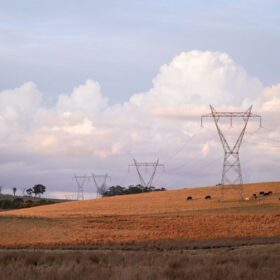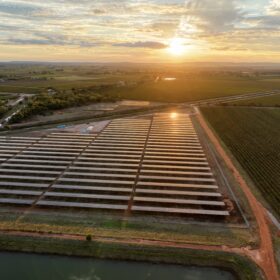Smart metering and data intelligence provider Intellihub said 50 street-side locations will be selected for the EV Streetside Charging Project, with each electric vehicle (EV) charging station to be connected directly to the overhead electricity supply and energy use matched with 100% ‘GreenPower’.
Intellihub will lead the project, which is being delivered by several energy and EV businesses in partnership with local councils. The project is being supported by the Australian Renewable Energy Agency (ARENA) with a $871,000 grant.
Schneider Electric is providing EV chargers for the project and Origin Energy is providing 100% GreenPower, meaning all the energy used by the EV charges will be matched with the equivalent amount of certified renewable energy added to the grid.
The charging station sites will be nominated by up to nine local councils taking part in the project. Nominations will be based on feedback from residents, expected demand, traffic access, and parking availability.
Intellihub chief executive Wes Ballantine said the project would help tackle the lack of public access to EV chargers, particularly for the one in four Australian households which do not have off-street parking.
“It’s expected that as many as 10 percent of new car sales in Australia will be electric vehicles by 2025,” he said. “That equates to an extra 120,000 new EVs on our local streets each year. It is likely that many of these car owners may be unable to charge their EVs from home.
“Power poles line most of our public streets and that presents an opportunity for the EV charging market. They’re an accessible, safe, and practical option for EV charging. They’ll be installed in front of the meter making them a controllable resource for grid operators looking to better manage the increasing penetration of renewables connected to the electricity network.”
Potential locations for charging stations include areas near apartment buildings and high-density single dwelling suburban streets, shopping strips, bus or train stations, sporting facilities and hospitals.
EV charging specialist at Withywindle, David Anstee, said there was potential for 190,000 public street-side EV charging stations across the country.
“Thousands of power or light pole-based EV chargers have already been successfully deployed across London, Germany, Canada, and the United States,” he said. “This trial will help us understand and overcome any regulatory barriers and build a commercial model that is fit for purpose for Australian conditions.
“It will uncover the charging habits of Australian EV owners across different locations and with different incentives. And it will give energy suppliers insights into how to use electric vehicles to soak up excess rooftop solar power during high generation periods.”
The trial is also expected to provide safer ways for EV owners without off-street parking to charge their cars. Local councils are receiving regular reports of cars being charged via extension cords strung from homes to cars parked on the street.
The customer engagement platform for the project will be provided by EV specialists EVSE and the virtual power plant and distributed energy solutions will be managed by AutoGrid.






By submitting this form you agree to pv magazine using your data for the purposes of publishing your comment.
Your personal data will only be disclosed or otherwise transmitted to third parties for the purposes of spam filtering or if this is necessary for technical maintenance of the website. Any other transfer to third parties will not take place unless this is justified on the basis of applicable data protection regulations or if pv magazine is legally obliged to do so.
You may revoke this consent at any time with effect for the future, in which case your personal data will be deleted immediately. Otherwise, your data will be deleted if pv magazine has processed your request or the purpose of data storage is fulfilled.
Further information on data privacy can be found in our Data Protection Policy.